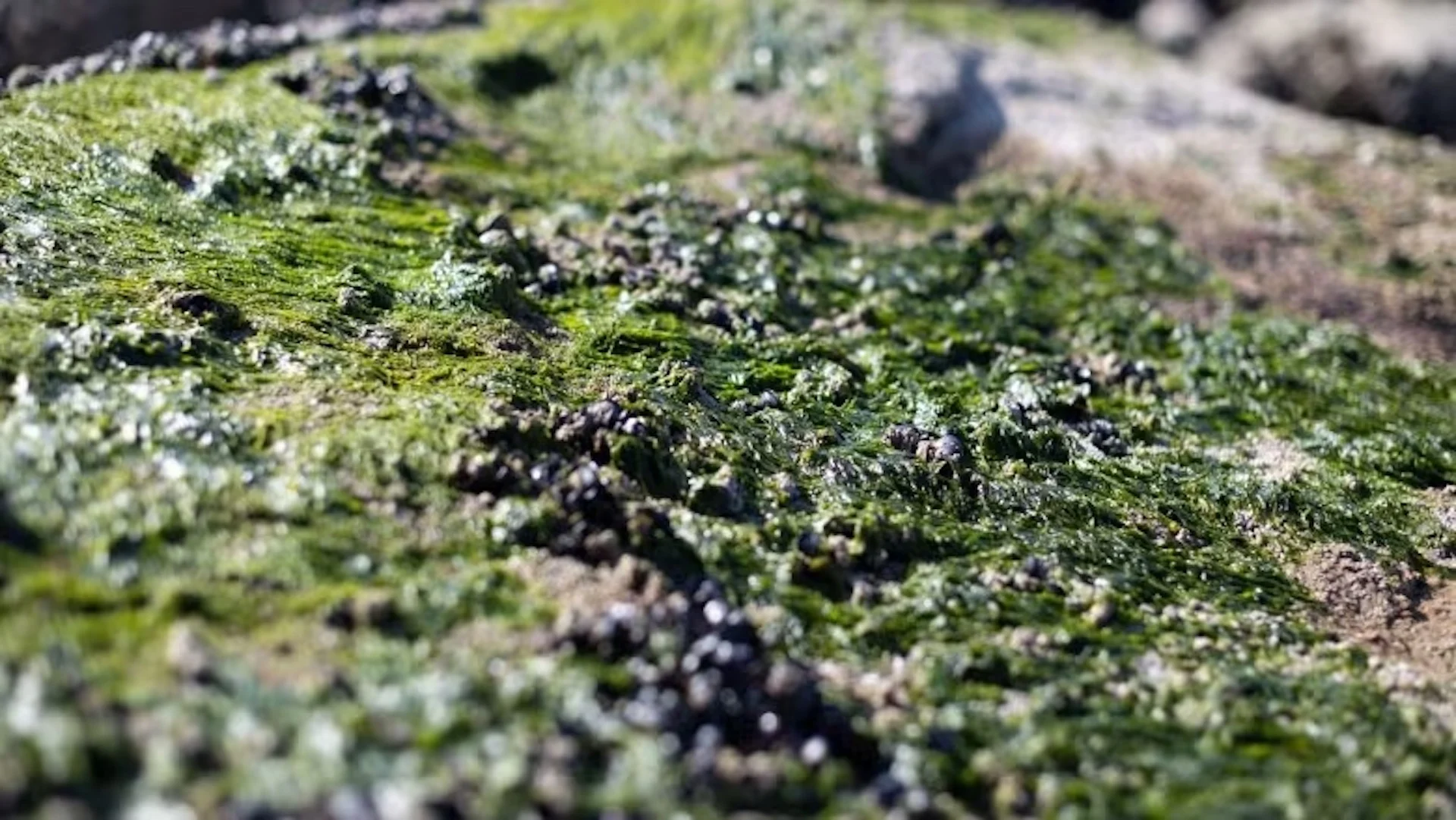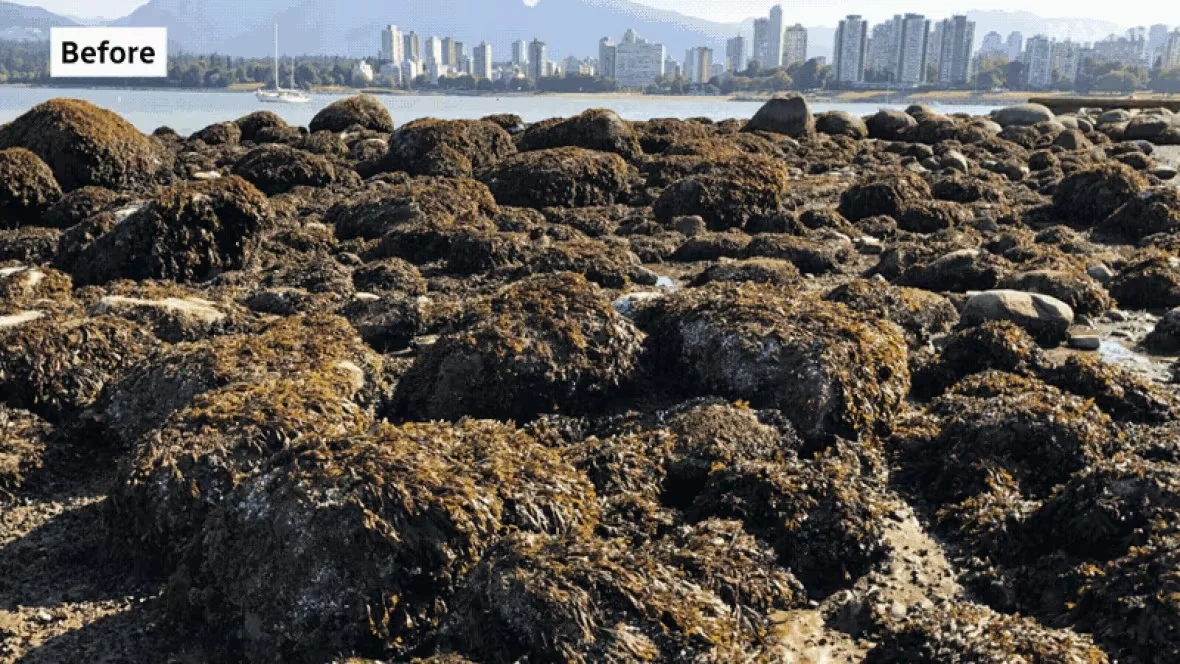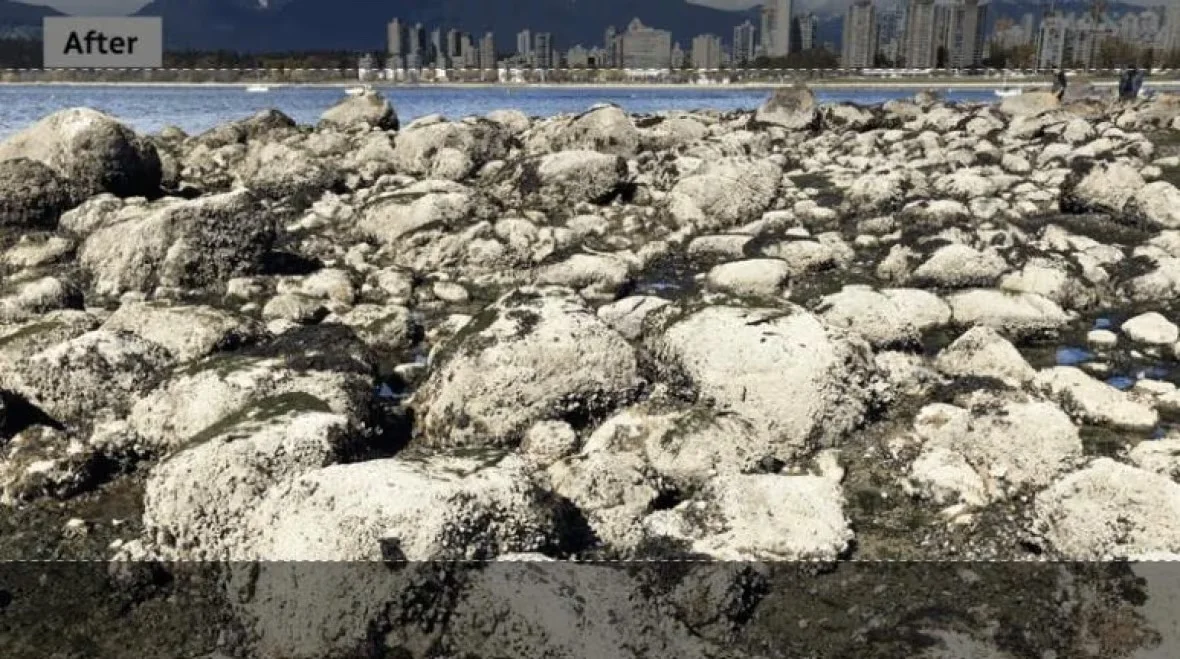
Marine heat wave off Pacific coast could prove dangerous for wildlife
A marine heat wave that's been raising the temperatures of waters off the Pacific coast for weeks has experts worried about the health of marine life.
Data from the U.S.-based National Oceanic and Atmospheric Administration (NOAA) shows that some parts of the Pacific Ocean are experiencing a Category IV, or "extreme" heat wave — the most severe level in the organization's ranking system.
RELATED: After mass sea animal die-off in B.C. heat dome, researchers search for new life
The heat wave has hit most of the B.C. coastline and has now expanded into the waters of the northwest United States.
"About a month ago, it was fairly localized in the vicinity of Haida Gwaii — at least the warm waters right along the coast. But over the last few weeks, it now extends from Oregon through to much of the Gulf of Alaska," Washington-based climatologist and researcher Nicholas Bond told CBC's On the Island.
"And we've seen some warm water lurking offshore for quite a while, but we just got into a weather pattern in which those warmer waters moved into the coastal zone, and that's a concern."
Bond said the water temperature fluctuates up and down the coast, but at the moment, researchers are seeing the thermometers read an average of two to two-and-a-half degrees above normal.
That can be dangerous for native species used to the more typical cold waters, in turn, causing issues up the food chain for species like salmon that would prey on those smaller animals.
"Also, waters of that temperature are more likely to have harmful algal blooms, with all sorts of implications for marine mammal mortality and for recreational and commercial shellfish harvest," Bond said.
Bond says the world's oceans have taken on much of the increased heat brought on by climate change — meaning more marine heat waves are likely in the years to come.
The North Pacific has experienced persistently warm waters off the North American coast for a few years. A heat wave in 2014, nicknamed "The Blob," lasted two years and caused unprecedented algal blooms, shifting distributions of marine life and causing changes in the marine food web.
The NOAA says between 2019-2022, the region experienced four of its worst heat waves since the organization began tracking marine temperatures in 1982.

Two photos show the difference in marine life in Vancouver before and after the 2021 heat dome. In the first, the rocks are covered entirely in marine life like barnacles and seaweed. (Chris Harley)
This summer, the warmer water has shifted closer to the shore into what Bond described as "critical coastal zones."
Marine heat waves can cause stress to coral reefs and other intertidal life.
A UBC researcher estimated that the 2021 heat dome, which raised shoreline temperatures to more than 50 C, killed more than one billion seashore animals like mussels, clams, and sea stars.
The warm waters are also affecting marine life farther away from the coast in B.C.

In the second photo, the same rocks are barren and dry. (Chris Harley)
The provincial government has placed restrictions on angling in the Kootenays during the times of the day when temperatures are warmest.
"Water temperatures in these systems are peaking at approximately 20 C in the afternoon to evening," the Ministry of Forests said in a statement.
"Angling fish at these elevated temperatures has been demonstrated to have harmful, and sometimes lethal, effects on fish, and any fish released after being caught will have difficulty recovering."
The restriction is in effect until Sept. 10, although it could be rescinded earlier than that if water temperatures cool.
Meanwhile, the Williams Lake First Nation has also shuttered all its fishing locations on the Fraser and Chilcotin Rivers until Aug. 17, citing low water levels and high water temperatures.
WATCH: What determines a marine heat wave? Nathan sets sail to find out
"Discharge levels are of considerable concern, with present water levels at Hells Gate currently measuring below the minimum historical level recorded in 1991," the First Nation wrote on Facebook.
"If this trend continues, water levels could fall well below any previously recorded levels, drastically affecting the vulnerable summer sockeye runs."
Consistently high temperatures are expected to continue on land and in the water. Environment Canada is predicting an extended summer season that could last well into October.
That's likely to be reflected on the coast, as well.
"The climate models that we use for seasonal weather prediction are certainly showing the warm water lingering for another month or so," Bond said.
"Some moderation is expected in the fall, but because of the El Niño that's in place now and almost sure to extend into 2024, I'm anticipating the warm water to be along the coast again in early 2024 — with all the kind of repercussions associated with it."
WATCH: What longer, hotter, and more frequent heat waves means for your health
Thumbnail courtesy of Gian Paolo Mendoza/CBC.
The story was written by Srushti Gangdev and published for CBC News. It contains files from On the Island.









